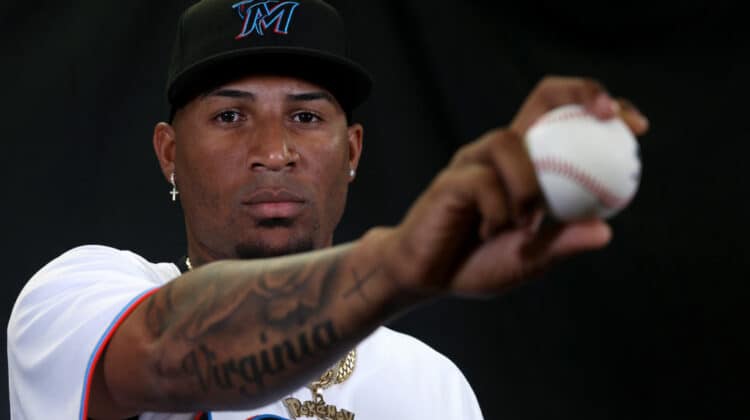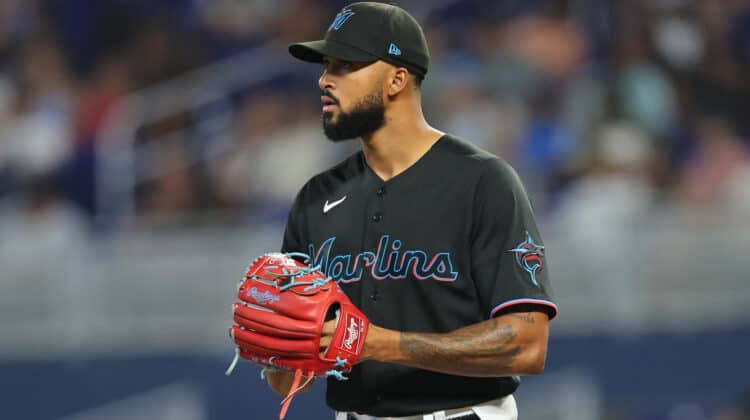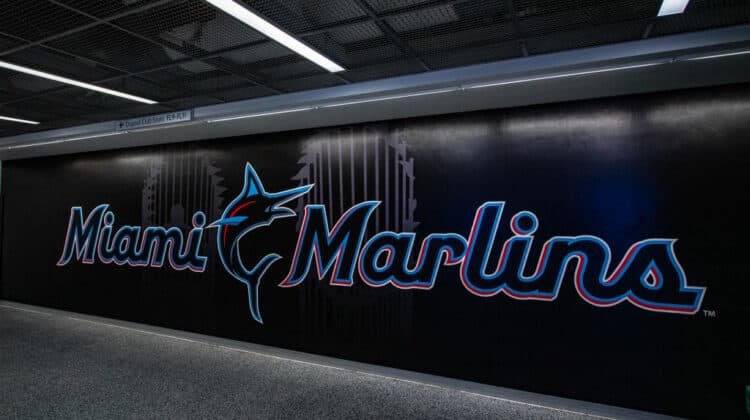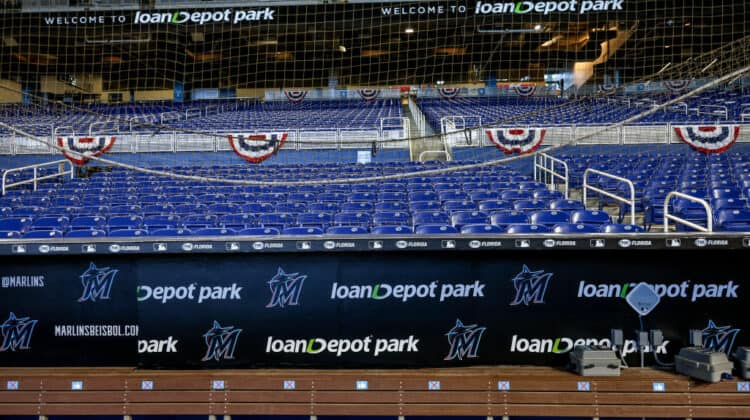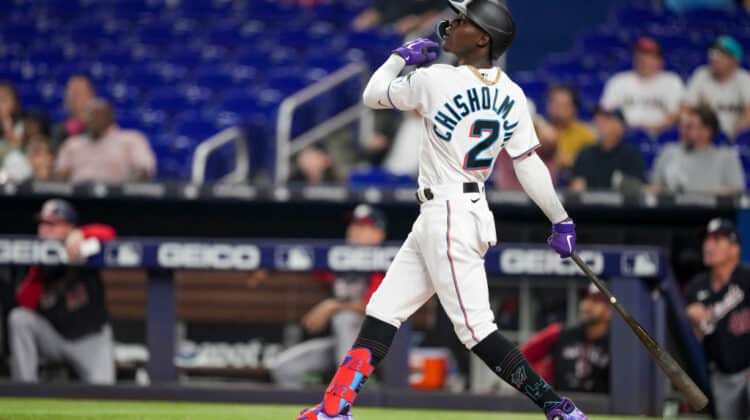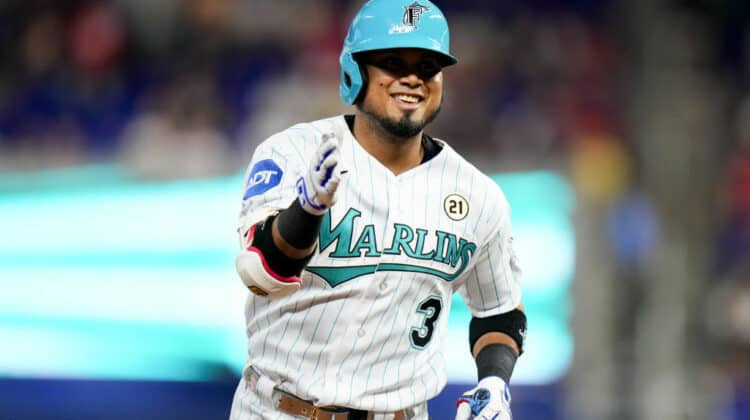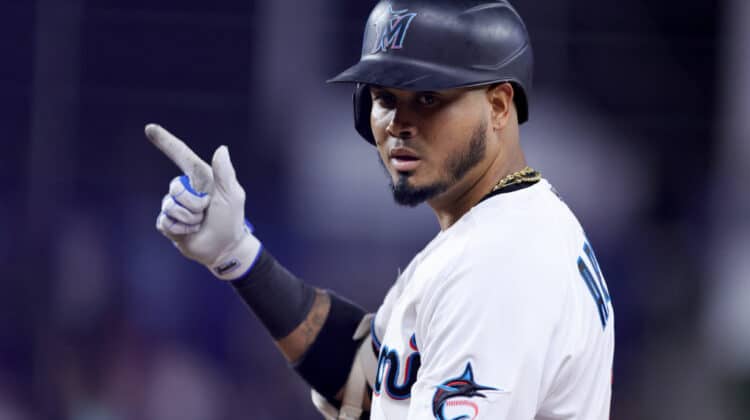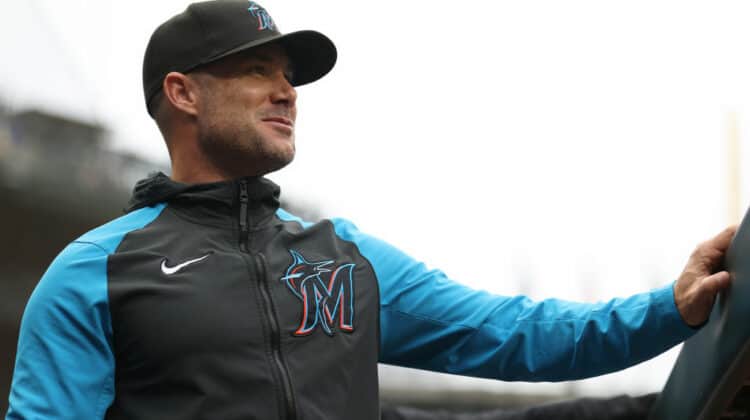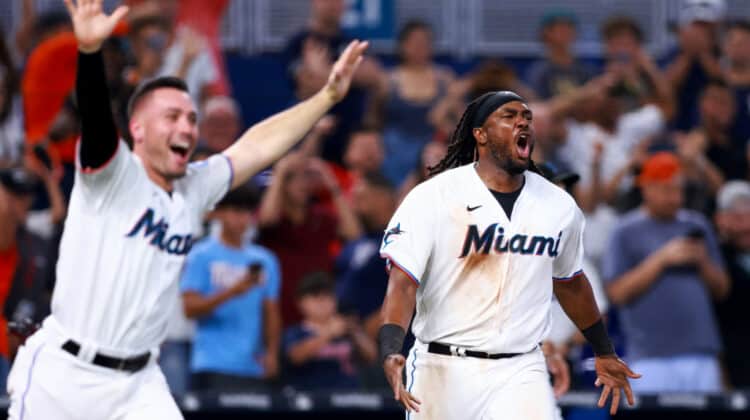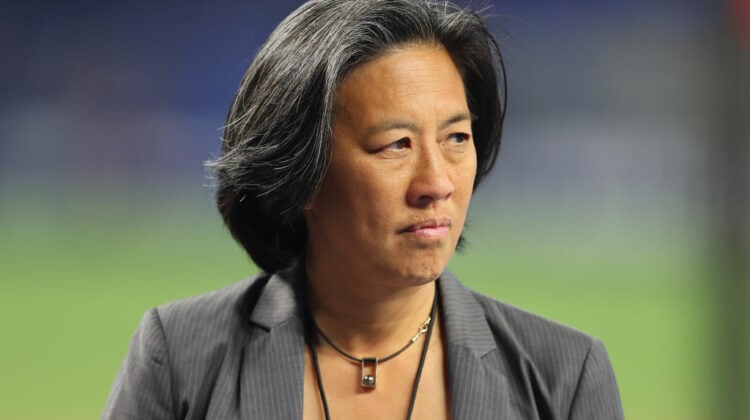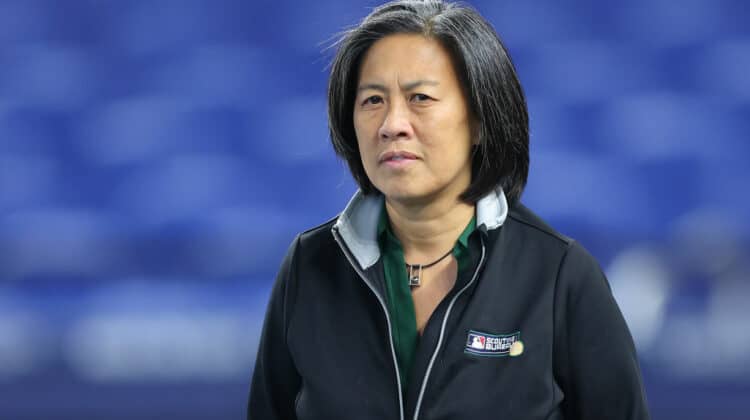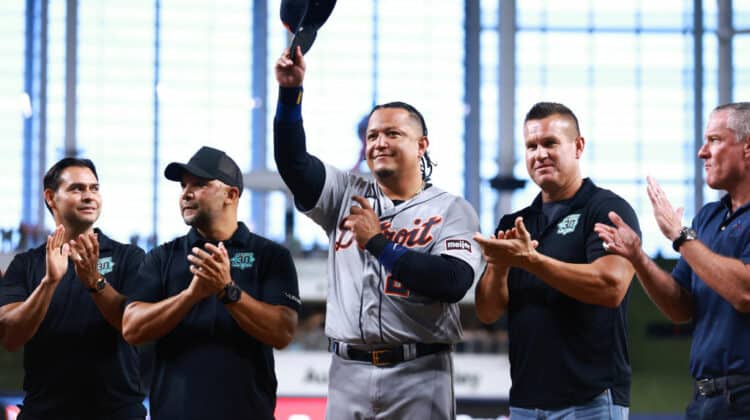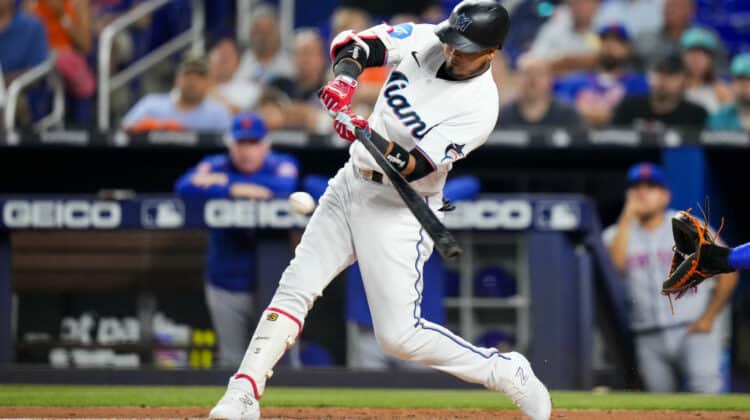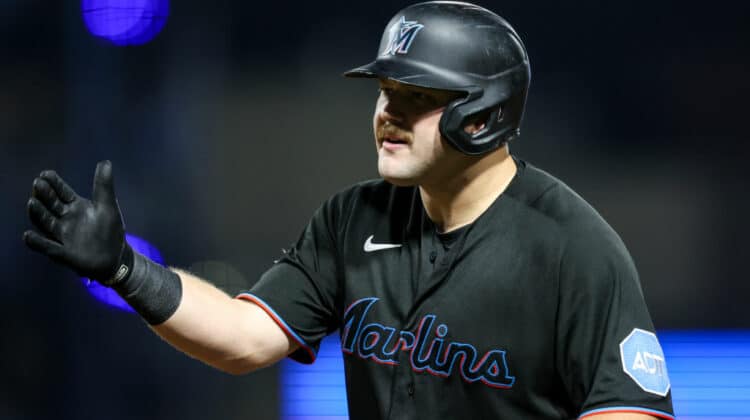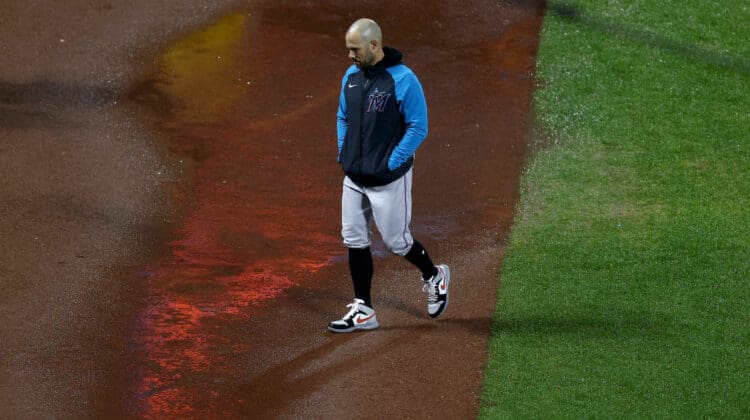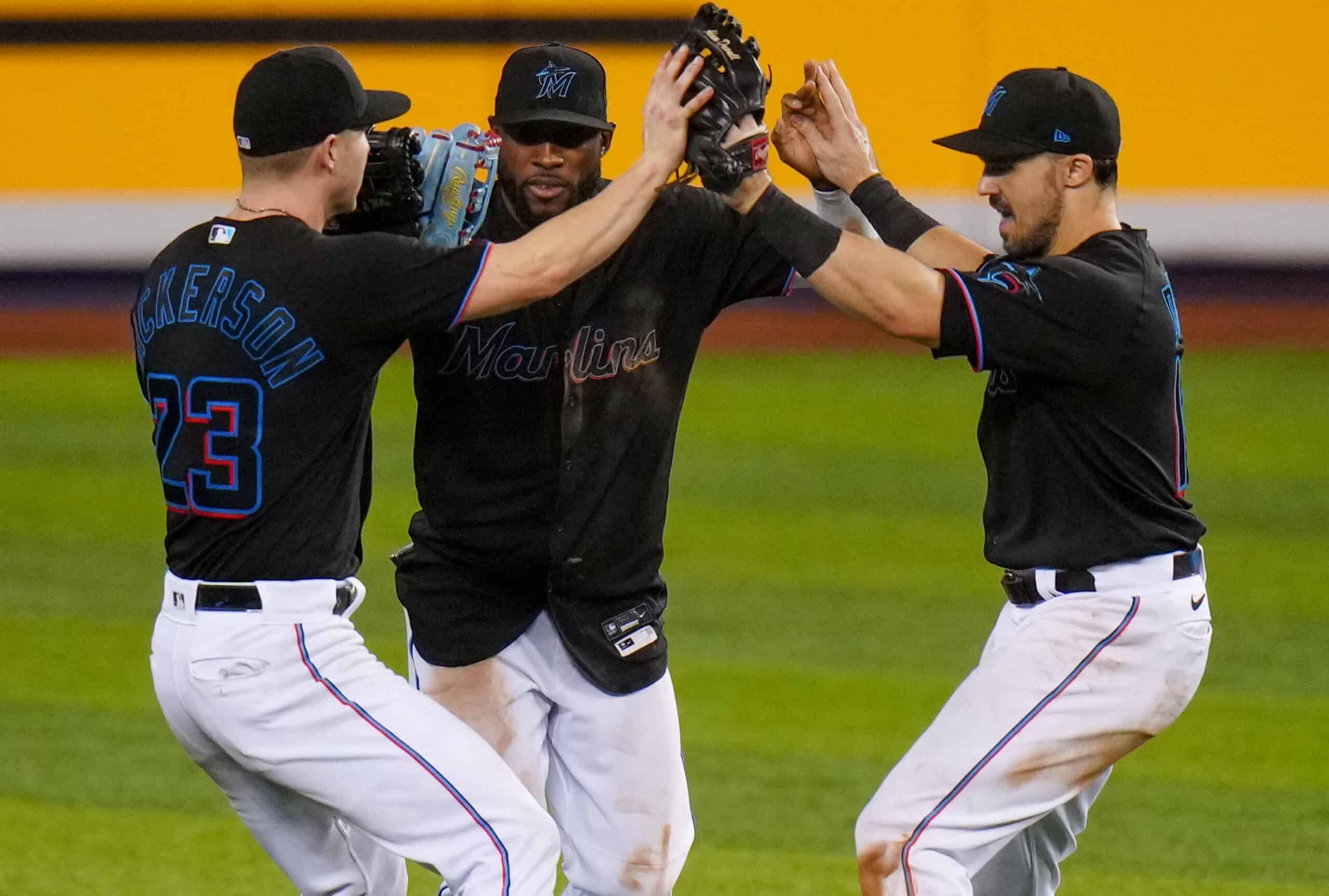
The Miami Marlins have had a weird season to this point in 2021.
They are currently, as of Monday afternoon, fourth in the National League East division with a 29-36 record.
One would think a team that is 29-36 and seven games behind the first place would have a negative run differential, right?
That is not the case with the Marlins, however.
Luck (Or Lack Thereof) Has Been A Factor
The Fish have a plus-6 run differential, easily the second-best of the division behind the New York Mets, who are plus-17.
The fourth-place Marlins are better than the second-place Philadelphia Phillies (minus-5), the third-place Atlanta Braves (minus-2) and the last-place Washington Nationals (minus-26).
The Marlins have been unlucky in some aspects, and negligent in others.
They have been unlucky because their expected win-loss record states they should be 33-32 and not 29-36.
According to the Expected Win-Loss record, they should be second in the division behind the Mets.
However, baseball doesn’t work that way, and other circumstances affect games and results.
A Disconcerting Stat Has Affected The Marlins
While the lack of luck may be a factor, the Marlins have also failed to execute when needed.
Miami currently has a 5-13 record in one-run games as of Monday afternoon, the second-worst mark in MLB, only surpassing the lowly Arizona Diamondbacks (2-14).
The fact that the Marlins have such a poor record in close games tells us a lot of what we need to know about the discrepancy between their run differential and their record.
All the areas of the game (offense, defense, baserunning, starting pitching, and bullpen) have some kind of influence in that situation, but the most important factors may be a lack of success in situational hitting and bullpen issues.
The bullpen as a whole hasn’t been bad, as they are 11th in MLB with a 3.82 ERA, but the unit has let some close games slip.
The fact that the Marlins had a very unstable late-inning situation at the start of the season didn’t help, clearly.
Marlins are the only team in NL East with a positive run differential (plus 11) — yet they are in last place. If they had a lock-down closer things would be different. Bass, Floro and Garcia have been tried. All are competent or better relievers but each has blown saves.
— Jon Heyman (@JonHeyman) May 1, 2021
Anthony Bass, the closer to start the year, blew save after save in April and had to be replaced.
Those are potential wins that the Marlins saw turn into losses.
Yimi Garcia is the closer now, and although he mostly gets the job done (2.42 ERA) he isn’t a top-tier reliever.
Miami leads the majors in blown saves, with 15, and that helps explain some of their issues winning late games.
As manager Don Mattingly said, the team needs to do the little things to win close games.
After the Marlins won last night's one-run game, Don Mattingly talks about how the "little things" can make or break close games!#ATLvsMIA #MLB #JuntosMiami pic.twitter.com/1FZdMkCEki
— Bally Sports Florida & Bally Sports Sun (@BallySportsFL) June 12, 2021
Injuries Have Gotten In The Way
Injuries have also been in the way of the Marlins being a .500 or better team.
We haven’t even had the chance to see young phenom Sixto Sanchez pitch this year, and Cody Poteet, one of his replacements, got injured.
Elieser Hernandez suffered a long-term injury in the game of his return from a different ailment.
Some of the team’s best players, including Jazz Chisholm, Starling Marte, Jorge Alfaro, Brian Anderson, and others, have had stints on the injured list.
Every team has to deal with injuries, but when a squad like the Marlins, with little-to-no offensive depth, loses its best batters for a considerable period of time, it hurts even more.
NEXT: 2 Ways Marlins Can Break Free Of Constant Rebuilding Phase


